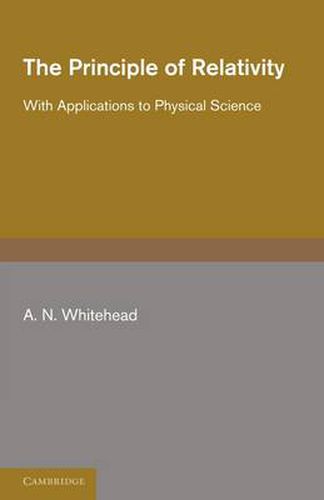Readings Newsletter
Become a Readings Member to make your shopping experience even easier.
Sign in or sign up for free!
You’re not far away from qualifying for FREE standard shipping within Australia
You’ve qualified for FREE standard shipping within Australia
The cart is loading…






Alfred North Whitehead (1861-1947) was a prominent English mathematician and philosopher who co-authored the highly influential Principia Mathematica with Bertrand Russell. Originally published in 1922, this book forms the follow-up volume to The Principles of Natural Knowledge (1919) and The Concept of Nature (1920). In it, Whitehead puts forward an alternative theory of relativity, one which goes against the heterogeneity of Einstein’s later theories in deducing that ‘our experience requires and exhibits a basis in uniformity’. The text is divided into three parts - ‘General Principles’, ‘Physical Applications’, and ‘Elementary Theory of Tensors’ - and exhibits a characteristically ambitious approach in mixing various academic disciplines. This is a fascinating book that will be of value to anyone with an interest in natural science, physics, and philosophy, together with the history of science.
$9.00 standard shipping within Australia
FREE standard shipping within Australia for orders over $100.00
Express & International shipping calculated at checkout
Alfred North Whitehead (1861-1947) was a prominent English mathematician and philosopher who co-authored the highly influential Principia Mathematica with Bertrand Russell. Originally published in 1922, this book forms the follow-up volume to The Principles of Natural Knowledge (1919) and The Concept of Nature (1920). In it, Whitehead puts forward an alternative theory of relativity, one which goes against the heterogeneity of Einstein’s later theories in deducing that ‘our experience requires and exhibits a basis in uniformity’. The text is divided into three parts - ‘General Principles’, ‘Physical Applications’, and ‘Elementary Theory of Tensors’ - and exhibits a characteristically ambitious approach in mixing various academic disciplines. This is a fascinating book that will be of value to anyone with an interest in natural science, physics, and philosophy, together with the history of science.